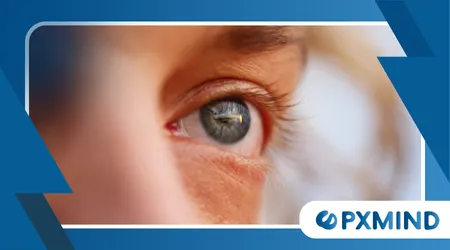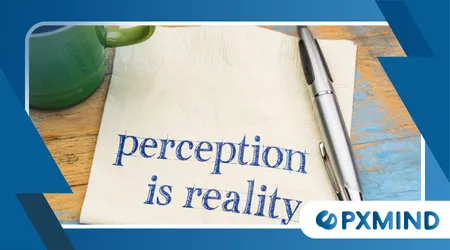How Framing Changes Our Perception of Reality

Framing Changes Our Perception of Reality profoundly, acting as the invisible lens through which we interpret the world.
Anúncios
Every piece of information we encounter is filtered, shaped by the way it’s presented to us.
This subtle manipulation of context isn’t just a communication tactic; it’s a fundamental element of human cognition.
Understanding this mechanism unlocks deeper insights into behavior.
The power of framing dictates not just what we think, but how we feel about a subject. It’s the difference between seeing a glass half-full or half-empty.
How we structure a narrative, an argument, or even a simple statistic, dramatically shifts the resulting emotional and intellectual response. This process is constantly at work.
The everyday applications of this psychological phenomenon are vast and often go completely unnoticed. Marketers, politicians, and journalists rely on it daily.
What is Framing in Psychology and Why Does it Matter?
Framing, in the context of psychology, refers to the principle that people’s choices are affected by how options are presented. It’s less about the content and more about the packaging.
This cognitive bias was first systematically explored by Nobel laureate Daniel Kahneman and Amos Tversky in their seminal work on Prospect Theory.
They demonstrated its powerful influence.
It matters because our perception of risk, value, and morality are not absolute; they are relative to the frame imposed.
This challenges the notion of purely rational decision-making.
For example, a medical procedure framed as having a 90% survival rate is widely perceived as safer than one with a 10% mortality rate, despite being mathematically identical.
Read more: How Stereotypes Form and Influence Us Daily
The positive frame encourages action.
This is critical for understanding consumer behavior and public policy adherence. The framing determines the path of least resistance for acceptance.
How Does Framing Change Our Perception of Reality in Everyday Life?
The influence of framing permeates mundane and monumental decisions alike. It is the silent shaper of our personal truths.
Consider a retail store offering a discount. Presenting it as “Buy one, get the second at 50% off” feels more appealing than “25% off two items.” This is simple arithmetic framed as a gain.
Imagine a new workplace policy. It’s framed as “An opportunity for 4-day workweeks, but requiring 10-hour days” instead of “Mandatory 10-hour shifts with a compressed schedule.”
See how interesting: What Makes a Person Likable? Psychology Explains
The first frame emphasizes the reward (the extra day off), while the second stresses the cost (the longer hours). Both frames describe the exact same schedule.
Framing Changes Our Perception of Reality because it leverages our innate desire to seek gains and avoid losses. Losses loom larger than equivalent gains.
This principle is central to understanding why bad news is often “spun” in the media to minimize perceived negative impact.
Why is it Crucial to Understand the Two Main Types of Framing?
Understanding attribute and risky choice framing helps us deconstruct the message architecture around us. These are the tools of perception architects.
Attribute Framing focuses on characterizing an object or event with either positive or negative descriptive words. This is about feature presentation.
A lean ground beef product can be labeled “75% lean” (positive attribute) or “25% fat” (negative attribute).
The “lean” label sells better, reflecting a preference for positive emphasis.
++ How the Brain Handles Information Overload
Risky Choice Framing involves presenting options associated with different degrees of risk, usually concerning potential gains or losses. This taps into Prospect Theory.
A well-known finding from Kahneman and Tversky’s work shows that people are risk-averse when the problem is framed in terms of gains and risk-seeking when framed in terms of losses.

The Evidence: Real-World Data on Framing Power
The impact of framing is not mere speculation; it’s robustly validated by behavioral economics and social psychology. It’s a measurable cognitive effect.
In a 2023 study published in Nature Human Behaviour by Tormos et al., researchers demonstrated how subtle linguistic frames affected public engagement with climate change policies.
People were more likely to support a carbon tax if it was described as an “investment in future security” rather than a “cost burden.”
The following table illustrates the differential impact of framing on choice using hypothetical scenarios, based on general findings from behavioral science:
| Scenario | Positive Frame (Gain) | Negative Frame (Loss) | Typical Preference |
| Product Feature | “Saves you $50 a year” | “Costs you $50 to replace” | Positive Frame |
| Medical Treatment | “80% success rate” | “20% failure rate” | Positive Frame |
| New Tax | “Funds for education” | “Slight increase in VAT” | Positive Frame |
This systematic manipulation demonstrates how deeply Framing Changes Our Perception of Reality in economic contexts. Can we ever truly make a ‘raw’ decision?
How Does Framing Act as an Anchor for Opinion?
Framing often serves as an anchor in communication, setting an initial reference point for subsequent judgment. All information is then interpreted relative to this anchor.
If a news report leads by emphasizing the cost of a new infrastructure project, that high number anchors the public’s subsequent discussion, overshadowing the long-term benefits.
The anchor doesn’t have to be rational; it just needs to be the first point of reference. This is how initial impressions wield disproportionate influence.
It’s like an analogical compass pointing the way for our interpretation before we even start walking.
What is the Role of Language and Emotion in Framing?
Language is the fundamental vehicle for framing, carrying the emotional payload that activates our biases. Words are not neutral; they are loaded with connotations.
Describing an immigrant as an “undocumented worker” versus an “illegal alien” completely changes the ethical and legal perspective. The terms evoke vastly different emotional responses.
One term highlights the economic function; the other, the breach of law. Both are frames, and both impact public policy debates.
The use of vivid, emotive language in a positive frame can overwhelm a rational, statistical counter-argument. Emotion is the catalyst.
Can We Develop Resilience Against Framing Effects? Framing Changes Our Perception of Reality
Yes, developing resilience requires a commitment to metacognition—thinking about how we think. We need to pause before reacting.
The first step is to recognize that we are being presented with a frame, not an objective truth. We must identify the deliberate slant.
We can try to re-frame the information ourselves. Ask: “How would I feel if this were presented using the opposite language?”
For example, when seeing a political poll, don’t just note the percentage of people who “support” a candidate. Actively consider the percentage of people who “oppose” them.
The statistical fact remains constant, but the shift in framing highlights the unstated alternative. This conscious shift neutralizes the immediate emotional pull.
Framing Changes Our Perception of Reality, but awareness grants us the opportunity to challenge the presented reality. The critical thinker is the one who reframes.

The Architecture of Your Reality
Ultimately, every choice we make, from the trivial to the profound, is situated within a cognitive boundary built by framing. Our reality is an architecture of presented narratives.
The experienced journalist knows that truth isn’t just about fact selection; it’s about the conscious, responsible presentation of those facts.
The constant influence of Framing Changes Our Perception of Reality makes intellectual vigilance necessary.
By recognizing the frames placed upon us, we become the architects of our own perception, moving from passive receiver to active, informed evaluator.
Frequently Asked Questions
What is the distinction between “framing” and “bias”?
Framing is a communication technique where information is presented in a specific way to elicit a desired response.
Bias is a cognitive shortcut or prejudice that already exists in the mind. Framing exploits existing cognitive biases.
How is the framing effect used in marketing?
Marketers use framing by focusing on the positive attribute of a product (e.g., 95% fat-free) over its negative attribute (e.g., 5% fat) or by framing costs as small daily amounts rather than large annual sums. This is designed to minimize the perception of loss.
Can framing be used ethically?
Yes, framing is a tool. Ethically, a doctor might frame a necessary surgery in terms of the high probability of recovery to alleviate patient anxiety and encourage compliance, focusing on the gain.
Unethical use involves deception or misrepresentation to manipulate for selfish gain.
Does a person’s culture affect framing susceptibility?
Yes, research suggests that cultural values can influence the impact of framing.
For example, some cultures may be more susceptible to social loss frames due to a higher emphasis on communal harmony and avoiding public disapproval.
